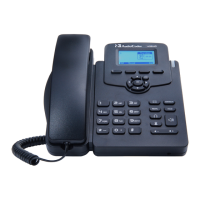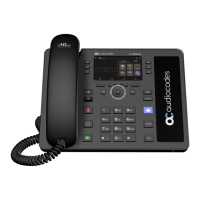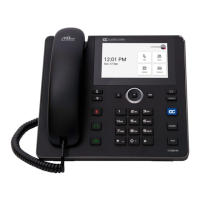400HD Series IP Phones
Administrator's Manual 32 Document #: LTRT-11950
4.5.7 Starting the VoIProvision Utility
The VoIProvision utility can run on both the Linux and Windows platforms. The VoIProvision
utility initially parses the csv file to generate the list of tags. The VoIProvision then reads each
line record of values in the csv file and for each line record, does the following:
Parses the line record to create a list of values
Opens the template file
Generates the .cfg file name and create a new .cfg file
Reads the template file, associates the mapped tags with actual values from the csv file
and writes the result to the .cfg file
Closes the .cfg file and template file
4.5.8 Usage
USAGE: VoIProvision<csv file><template file><.cfg file>
Note the following:
The first line of the csv file contains the list of tags (e.g.,
[mac],[name],[id]).
The remainder of the csv file contains a line record per .cfg file (e.g.
00908f112233,4071,Ethan).
There is no restriction on the format of the tags (e.g., [tag] or @tag@).
The template file defines the .cfg file format. During VoIProvision
run-time, the mapped tags in the template file are associated to actual
values that are read from the csv file.
Currently only a single tag can be defined per line record in the template
file.
The .cfg file name should represent the string of one of the predefined
tags in order to generate a separate .cfg file per csv line record
(e.g., [mac].cfg).
4.6 Using the Encryption Tool
This section shows how to use the Encryption tool.
4.6.1 Encrypting Configuration Files
This section shows how to encrypt the Configuration File. For example, you may wish to
encrypt the configuration file when it is send over an unsecure network.
To encrypt the configuration file:
At the command line prompt, specify the following:
encryption_tool.exe –f <filename>.cfg
where <file name>.cfg specifies the name of the Configuration file that you wish to
encrypt.
Once the Configuration file is encrypted, it receives the suffix '.cfx' (e.g. Conf.cfx). This is
the file that you should specify in the 'Configuration URL' and the 'Dynamic Configuration
URL' fields when performing automatic provisioning (see Part II 'Automatic
Provisioning').

